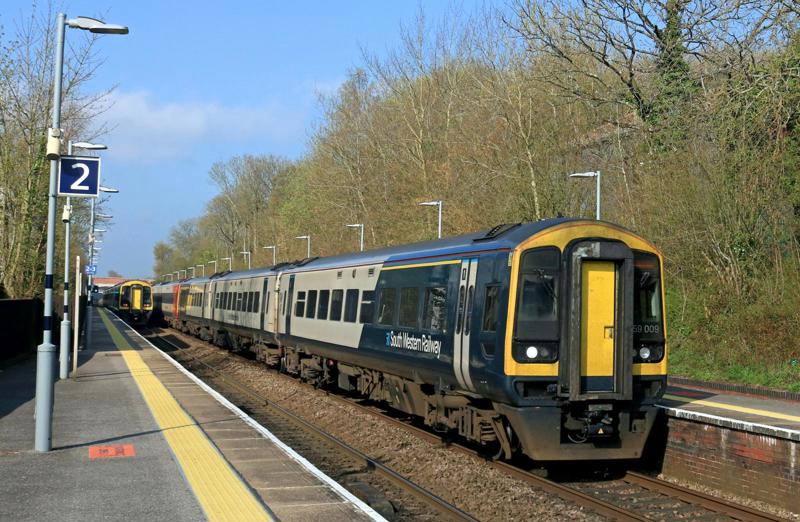
‘Islands’ of third-rail electric power are being assessed for the West of England line between Basingstoke and Exeter.

‘Islands’ of third-rail electric power are being assessed for the West of England line between Basingstoke and Exeter.
Network Rail and South Western Railway have been working for two years on plans to remove diesel trains on the long-distance route.
They have involved train manufacturers and rolling stock leasing companies in studies to fit battery power to either Class 450 Desiros or new Class 701 Arterio trains, able to recharge on sections of discontinuous third-rail track.
The aim is to provide a lower-cost way to decarbonise the remaining diesel-powered route from London’s Waterloo station.
Engineers are considering 80km (50 miles) of new third rail in 15 “islands” of power along the route.
“It’s all looking really feasible,” SWR Engineering Director Neil Drury told RAIL.
“We would put third-rail down the West of England, either in a phased approach or as a big-bang project.”
The driving factor is the age of the Salisbury-based fleet of Class 158 and ‘159’ diesel trains. Already 35 years old, there is widespread acceptance that the trains cannot continue beyond 2030-32 without substantial life-extending investment that would be difficult to justify.
“We have more rolling stock than we required pre-COVID,” said Drury.
“We hit on the idea that either the Class 450s or ‘701s’ are ripe for retro-fitting battery technology.
“Batteries have broadly 15 years of life in them. Desiros have about 15 years of life left, and the ‘701s’ are brand new. We have options to last the life or replace batteries at mid-life. Both could work really well.”
SWR said Siemens and Angel Trains, and Alstom and Rock Rail are all keen to invest.
They have identified suitable electricity connection points along the route that would avoid tapping into the very high voltage grid.
Third rail would be concentrated in areas where rapid acceleration is required, such as around stations.
Safety experts have previously opposed any extension of third rail power, arguing that overhead wires involve less risk. But discontinuous overhead wires on the route have been ruled out.
“There isn’t a tri-mode option out there at the moment,” Drury explained.
“The space you would use for batteries on a modified train is the same space transformers would occupy for overhead power. Overhead power is more expensive and requires a higher power load.”
Battery trains are likely to achieve 50-70 miles between charges without difficulty. So why use any third rail between Basingstoke and Salisbury?
“You have to factor in network disturbance: performance issues, trespass, cows on the line, or whatever. You rapidly conclude that you need to stick some discontinuous power in shorter sections, to make sure a train can always get from A to B and back to A again, without the battery going flat.”
SWR has found an opportunity to remove its expensive old diesel fleet without adding significantly either to the total cost of its electric fleet or buying alternative diesel trains. It could then use the money saved to contribute to the battery and third-rail combination.
Because the West of England route is largely unused by other operators, it is a discrete part of the network in which private finance could be invested over a 15-year period, if the new government decides that is an acceptable way of funding infrastructure.
“Our deadline for replacing the diesel trains is clear,” concluded Drury.
“If we had the go-ahead today to crack on, we could deliver that.”
Login to continue reading
Or register with RAIL to keep up-to-date with the latest news, insight and opinion.


















Login to comment
Comments
No comments have been made yet.